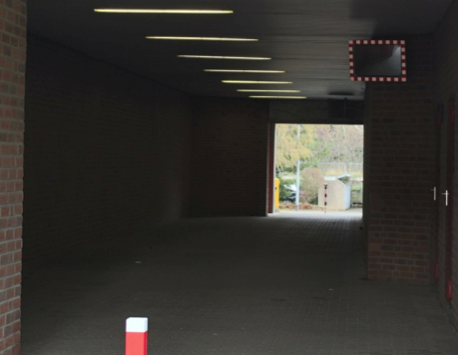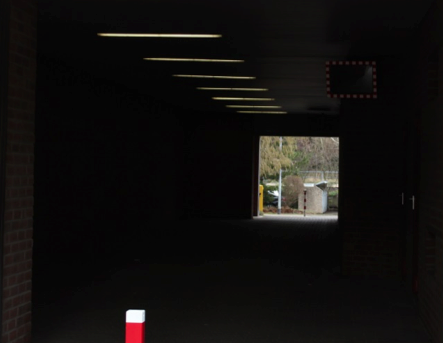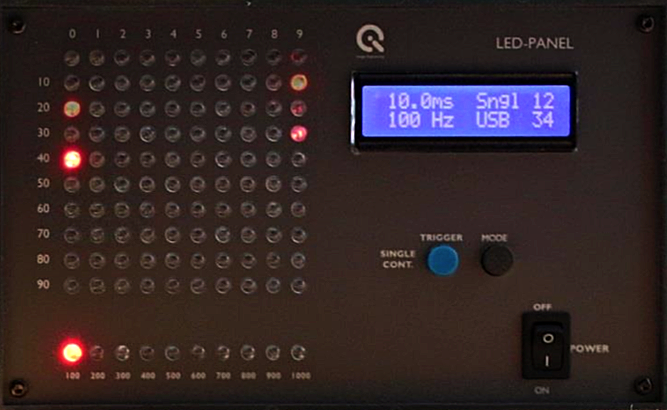More and more cameras provide a so-called High Dynamic Range (HDR) mode these days. If the scene that you want to get onto your memory card has a too strong contrast, this mode will help to maintain the shadows while keeping the highlight.
Because the capabilities of the used sensors are limited in their dynamic range, most of the HDR modes use a simple trick: the device captures more than one image and some clever algorithms combine these images. Therefore the lost information in one image is substituted by the information from another image.
If the time between the captured images is too long, artifacts from moving objects might become visible.
 |
 |
| HDR mode | without HDR mode |
A consumer D-SLR camera with and without HDR mode. We can clearly recognize that in HDR mode we see more details in the shadows. How does this work internally?
The LED-Panel is useful for all kinds of timing measurements. Shutter time lag, shooting time lag, frame rate and many more measurements are possible - and of course to check the HDR mode of a camera.
We will show a quick check we made, using the LED-Panel.

The LED-Panel captured using HDR mode.
In this case, the LED-Panel was set that way that every hundreds of a second the next LED is illuminated. Based on the illuminated LEDs in captured image we can see that the camera combined three pictures: First after 18/100s, the second after 29/100s and the third after 39/100s. So this camera captures three images with a gap of 1/10 of a second.
Is 1/10 of a second long? Or is it too long? What are other devices doing? We will check in the future and post it here.

